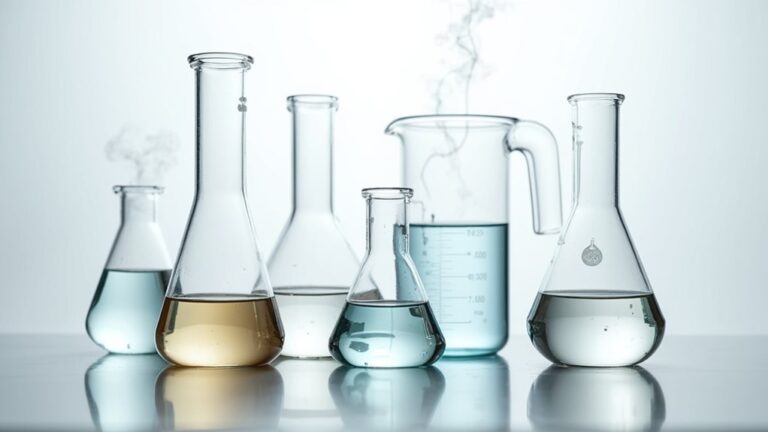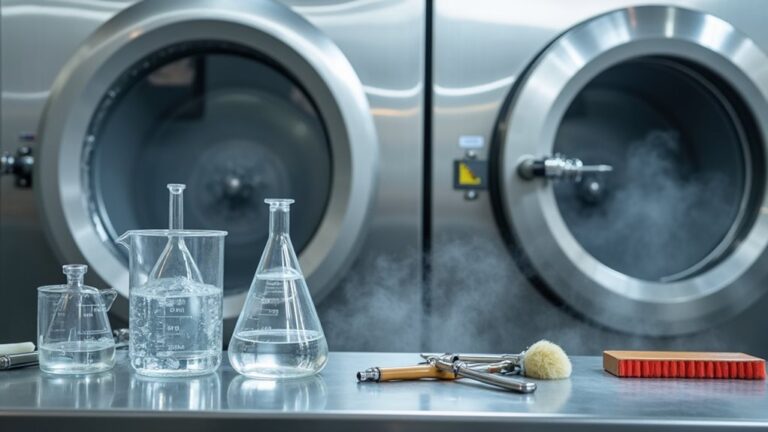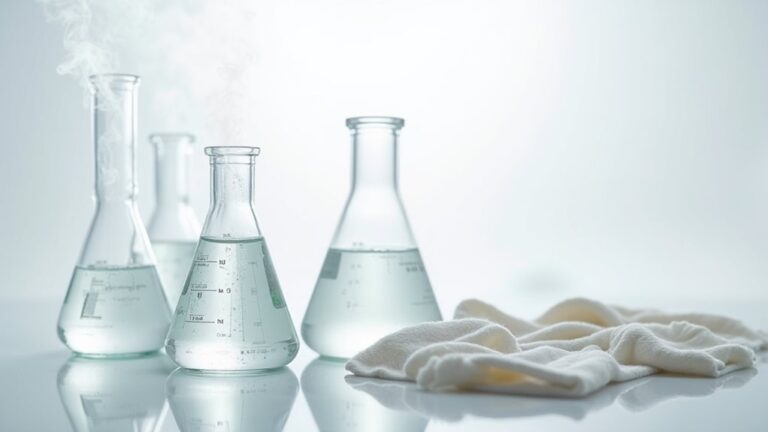Yes, dry cleaning fluid can cause cancer, and you’re right to be concerned about those chemical fumes clinging to your clothes. Perchloroethylene (PCE), the most common dry cleaning solvent, is classified as a probable human carcinogen by international health agencies, with studies linking it to bladder cancer, non-Hodgkin lymphoma, and multiple myeloma among workers who face chronic exposure. While your risk as a consumer is lower, residual PCE can still vaporize into your home’s air, and understanding safer alternatives will help you protect your family’s health.
Understanding Perchloroethylene and Its Carcinogenic Properties
When I first learned about perchloroethylene, or PCE as it’s commonly called, I’ll admit I was a bit shocked to discover that this chemical lurking in our neighborhood dry cleaners had such a dark side.
I was shocked to discover that the chemical lurking in our neighborhood dry cleaners had such a dark side.
The International Agency for Research on Cancer doesn’t mince words—they’ve classified perchloroethylene (PERC) as a probable human carcinogen, which honestly gave me pause the next time I dropped off my work shirts.
What really struck me was learning about the cancer risks faced by dry cleaning workers who breathe this stuff daily, with studies showing increased rates of bladder cancer, non-Hodgkin lymphoma, and multiple myeloma in their profession.
Since 2012, even the EPA has recognized these serious health concerns, prompting much-needed regulatory changes.
Fortunately, many eco-friendly solvents and alternative cleaning methods are now available that can significantly reduce or eliminate these health risks.
Health Risks for Dry Cleaning Workers and Consumers

The sobering reality about PERC extends far beyond its classification as a carcinogen, creating a web of health risks that affects everyone from the dedicated workers who handle your clothes daily to you, the customer who slips on that freshly cleaned blazer.
Workers face particularly devastating consequences, with studies showing markedly higher cancer rates, including bladder cancer, non-Hodgkin lymphoma, and multiple myeloma, alongside serious liver, kidney, and nervous system damage from chronic exposure.
You’re not immune either – residual PERC lingers on your cleaned garments, vaporizing into your home’s air when you unwrap that plastic-covered dress.
It’s honestly unsettling how this invisible threat quietly infiltrates our daily routines, making both workers and consumers unwitting participants in ongoing health risks.
Fortunately, the dry cleaning industry has been shifting toward safer alternatives like wet cleaning, liquid carbon dioxide, and biodegradable solvents to address these health concerns.
Scientific Evidence Linking PCE Exposure to Cancer Development
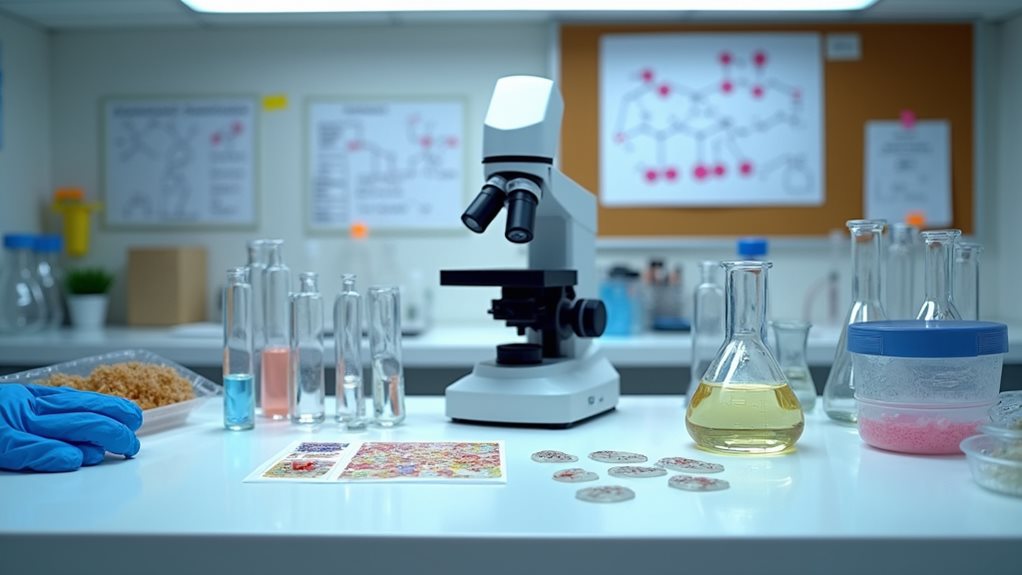
While countless industries have their dirty little secrets, the dry cleaning world’s relationship with perchloroethylene has become one of the most thoroughly documented health disasters in modern occupational medicine.
You’re looking at decades of research that paints a troubling picture, honestly. The International Agency for Research on Cancer didn’t mince words when they classified PCE as a probable human carcinogen, and frankly, the evidence keeps piling up like laundry on a busy Monday.
The cancer research doesn’t lie – PCE exposure creates serious health risks that accumulate like dirty clothes in your hamper.
Studies consistently show that exposure to this chemical greatly increases your risk of bladder cancer, non-Hodgkin lymphoma, and multiple myeloma.
Meta-analyses reveal higher cancer mortality rates among dry cleaning workers, while even low-level, prolonged exposure creates respiratory and neurological problems that’ll stick with you.
Research has also identified elevated risks of esophageal and cervical cancers among workers with occupational exposure to PERC.
Regulatory Response and Phase-Out Efforts
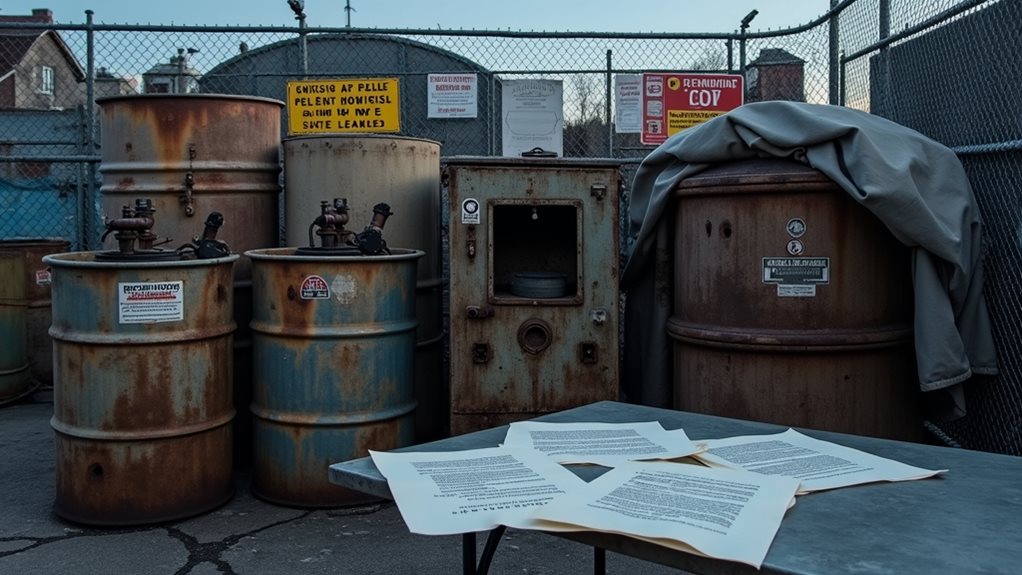
If you’ve been following the mounting evidence about PERC’s cancer risks, you’ll be relieved to know that regulatory agencies have finally stepped up to the plate, though admittedly it took them longer than many of us would’ve liked.
The EPA tightened the screws on PERC regulations back in 2006 and pushed for a residential phase-out by 2020, while progressive states like California have gone even further with complete bans by 2023 – a move that’s forcing the entire industry to scramble for safer alternatives.
However, the reality is that compliance hasn’t been an effortless ride for many dry cleaning businesses, especially smaller operations that are struggling with the costs of switching equipment and finding reliable substitute solvents that actually work.
This regulatory push has accelerated the adoption of safer alternatives like wet cleaning, liquid CO2, and hydrocarbon solvents that pose significantly lower health risks to both workers and consumers.
EPA Regulatory Actions
Given mounting evidence about perchloroethylene’s cancer risks, federal and state regulators finally stepped up to tackle this invisible threat lurking in our neighborhoods.
The EPA implemented stricter regulations on perchloroethylene (PCE) in 2006, recognizing the serious health risks this chemical posed to families living above dry cleaners.
You’ve probably walked past those street-level shops without realizing toxic fumes could be seeping into apartments upstairs – honestly, it’s unsettling when you think about it.
The regulations mandated a complete phase-out of PCE use in residential buildings by 2020, which was frankly overdue.
Currently, the EPA continues reassessing PCE’s health impacts alongside other harmful solvents, demonstrating their ongoing commitment to protecting you from these dangerous chemical exposures.
Fortunately, many dry cleaning facilities are now adopting safer alternatives like wet cleaning, liquid CO2, and hydrocarbon solvents to reduce health risks for both workers and consumers.
State-Level Bans
Building on federal momentum, several states decided they couldn’t wait around for Washington to fully address this health crisis, so they rolled up their sleeves and enacted their own protective measures.
California blazed the trail in 2023 with a complete PERC ban, fundamentally telling dry cleaners, “Figure it out, because we’re not risking our residents’ health anymore.”
New York, Illinois, and New Jersey followed suit with their own regulations limiting this carcinogenic solvent, creating a domino effect that’s reshaping the industry.
These regulatory changes have accelerated industry adoption of safer alternatives like liquid CO2 cleaning and wet cleaning methods that eliminate toxic chemical exposure.
While enforcement remains spotty in some areas—honestly, monitoring every dry cleaner isn’t exactly thrilling work for health departments—the message is clear: states won’t tolerate known cancer risks hiding behind convenient cleaning solutions.
Industry Compliance Challenges
While state-level bans signal regulatory progress, the dry cleaning industry’s response has been, well, about as enthusiastic as a teenager asked to clean their room—lots of foot-dragging and creative excuses.
You’ll find that many operators cite overwhelming financial barriers when switching from perchloroethylene (PERC) to safer alternatives, and honestly, those $40,000-$100,000 machine replacement costs would make anyone’s wallet weep.
Here’s what’s creating the biggest compliance headaches:
- Inconsistent monitoring – EPA oversight varies wildly between regions
- Industry pushback – Trade groups downplay PERC’s serious health effects
- Financial resistance – Small businesses struggle with conversion costs
The result? You’re still potentially exposed to carcinogenic chemicals because enforcement remains patchy, and some dry cleaning industry players continue prioritizing profits over protecting your health.
Ironically, many garments labeled as requiring dry cleaning could actually be cleaned using gentle detergents or other safer methods, making the industry’s resistance to change even more troubling from a public health perspective.
Alternative Solvents and Their Safety Profiles
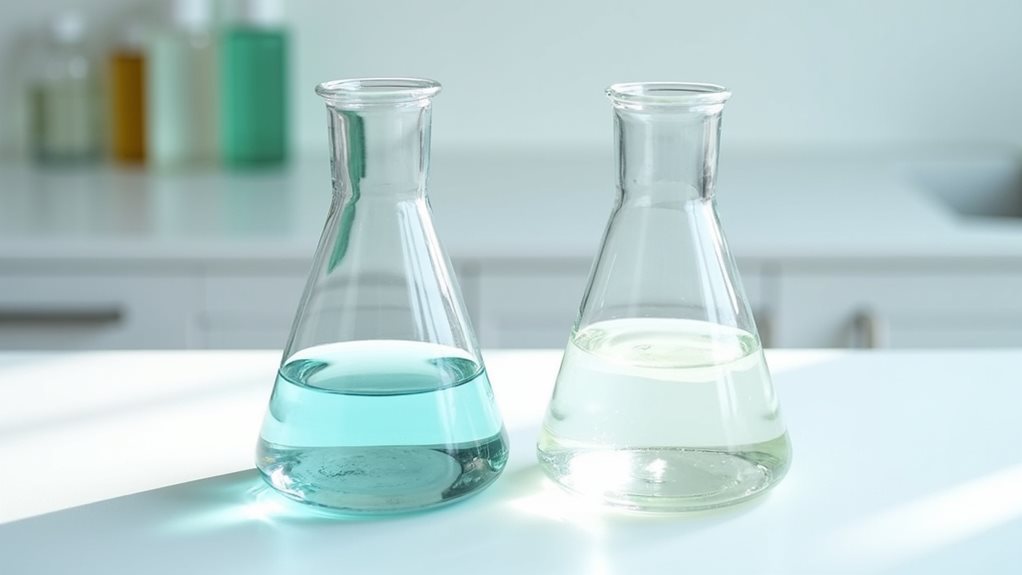
As concerns about traditional dry cleaning solvents have grown, the industry has scrambled to develop safer alternatives, though steering through this terrain feels a bit like choosing the least problematic option from a mixed bag of unknowns.
You’ll find alternative solvents ranging from promising to problematic, each carrying its own health risks compared to PERC’s well-documented dangers.
High-flashpoint hydrocarbons show promise but lack thorough health research, while Propylene Glycol Ethers offer biodegradable solutions with established safety limits.
Siloxane (D5) appears environmentally friendly yet needs more toxicity data.
However, avoid n-Propyl Bromide—it’s possibly carcinogenic and represents what experts call “regrettable substitution.”
The safest bets? Liquid carbon dioxide and wet cleaning methods eliminate harmful residues entirely. 🧽
These safer alternatives help reduce the risk of nervous system damage and other health complications associated with traditional chemical solvents.
Protecting Yourself From Dry Cleaning Chemical Exposure
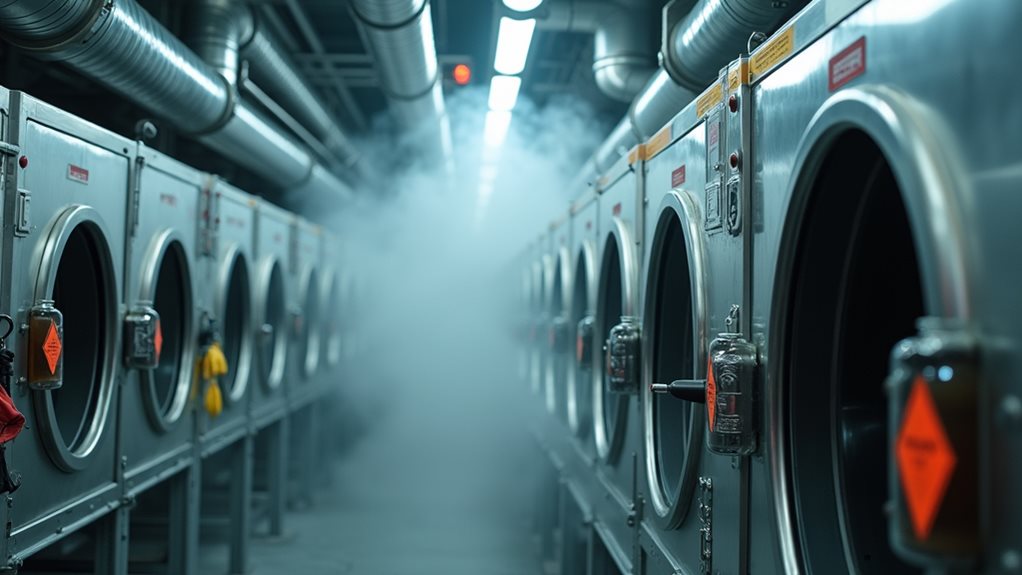
Several practical steps can shield you from the chemical cocktail lurking in your freshly pressed clothes, and honestly, I wish someone had shared these tips with me years ago when I was blindly dropping off my work shirts without a second thought.
Here’s your protection playbook against chemical exposure:
- Ask your dry cleaners about their solvents – specifically request businesses using liquid carbon dioxide or wet cleaning methods instead of traditional chemicals linked to cancer.
- Air out garments outdoors before bringing them inside, allowing those sneaky vapors to dissipate rather than polluting your home’s air quality.
- Never leave dry-cleaned items in hot cars where heat accelerates chemical release, turning your vehicle into a toxic hotbox 🚗
Sometimes washing “dry clean only” items at home works perfectly fine, reducing your overall exposure considerably.
Look for certified green cleaners in your area who offer biodegradable solvents and other eco-friendly alternatives to traditional perchloroethylene-based processes.


